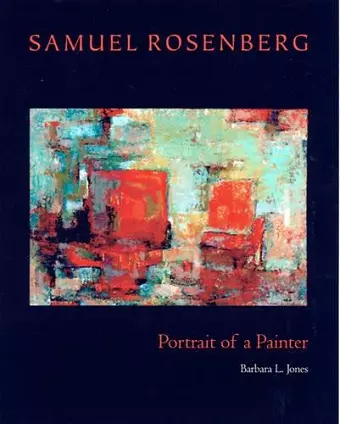Samuel Rosenberg
Portrait Of A Painter
Format:Hardback
Publisher:University of Pittsburgh Press
Published:6th Jul '03
Currently unavailable, and unfortunately no date known when it will be back

While other artists moved to New York or Paris, painter Samuel Rosenberg (1896-1972) never left the city he called home. From the age of twelve, when he took his first art class at a settlement house in Pittsburgh's Hill District, through a vigorous career that spanned six decades, Rosenberg was challenged by the complex city whose artistic legacy he did much to shape. In Pittsburgh, Rosenberg created more than five hundred paintings, engaged with the dynamic progress of American painting in the twentieth century, and inspired generations of students. This book is the first full study of his work and influence. The constancyof Rosenberg's career was change. He began as a portraitist (1915-1930), influenced by Velazquez, Rembrandt, Matisse, and later, Picasso. In the 1930s, however, Rosenberg turned to portray the city around him. Inspired by the steep hills, densely polluted atmosphere, crooked houses, and layered immigrant populations with intersecting poverties, he created emotional urban landscapes that ensured Pittsburgh's place in the American regionalist art movement.Rosenberg's focus was the Hill District, where he lived as a young man. In poignant, socially conscious paintings, he traced the transitions of this gritty, multiethnic neighborhood through the Great Depression and Pittsburgh's early experiments in urban renewal. "Yes, I know there are artists in town who sneer at Pittsburgh, who want to go to Venice and paint canals," Rosenberg told a reporter. "But the artist who dislikes the town should . . . stay here and put his hate into pictures of the Pittsburgh scene. In doing so, he would have something to say."In the 1940s, responding to the horrors of World War II, Rosenberg's subjects became more universal and allegorical. In paintings such as Israel (1945), his most reproduced work, haunting human figures do not allow viewers to remain indifferent to the world situation. Here he began experiments with abstraction and the quality of light, a search he would continue for the rest of his life.From 1949 until his death in 1972, Rosenberg developed his own form of abstract expressionism, translating emotion with color, but without entirely abandoning representation. Using sequential layers of translucent color and transparent glazes, Rosenberg was able to achieve a penetrating, shimmering effect in his work. His paintings from this period are reminiscent of stained...
I have long been impressed with the remarkable diversity of Sam Rosenberg's art - from moving scenes of depression-era Pittsburgh to brilliant painterly abstractions. Barbara Jones's book explores Rosenberg's life, providing us with the cultural and historical background necessary to understand his work as an artist and a teacher. - David Wilkins; ""Provides an interesting picture and wonderful insight into Pittsburgh, set against the career of one of the region's most important artists."" - Sam Berkovitz
ISBN: 9780822942139
Dimensions: unknown
Weight: unknown
248 pages